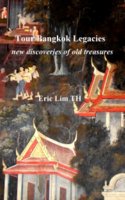| Back to Back Issues Page |
 |
|
Bangkok Travelbug July 14 Prachinburi National Museum June 25, 2014 |
| Hello
Background to Prachinburi Prachinburi, about 140 km north-east of Bangkok, is one of the seven provinces in the eastern region of Thailand. The province is flanked by Nakhon Nayok and Sa Kaew. The other four provinces are the coastal provinces of Chonburi, Rayong, Chanthaburi and Trad. Sa Kaew shares a common border with Cambodia and the border town of Aranyaprathet in Sa Kaew was the location of a refugee camp during the Cambodia conflict in the late 1970’s and early 1980s Prachinburi doesn’t attract very much attention. I only took an interest after 10 years here and made my first visit. To my surprise the province holds a great deal of old historical treasures which are overlooked by visitors to Thailand. Pre-historic remains found at two archaeological sites in the east have evidence of life from 600 BC to as far back as 2,000 BC. That’s more than 4,000 thousand years ago! Besides these pre-historic relics there is also evidence of later civilizations that had a presence in the region namely Dvaravati period (6th – 11th centuries) and the Khmer period (9th – 15th centuries). Table of contents Prachinburi National Museum The Prachinburi National Museum is one of 21 national museums in central and eastern Thailand. It displays artefacts from the various provinces in the eastern region with the emphasis on Prachinburi. Many of the artefacts are from the ancient city of Si Mahosot 20 km south of Prachinburi city which we will be visiting in our next issue, at least what remains of it. The Prachinburi National Museum is organized in two floors:
So let’s take a tour of this museum and discover the history of the eastern region of Thailand. Table of contents Ground floor - Art & archaeology of the eastern region When you enter the main entrance of the Prachinburi National Museum, this is the scene you will encounter; relics dating back to Dvaravati period 7th - 11th century AD in Si Mahosot ancient city. Some of these artefacts are Khmer art in the Bayon style 11th – 12th century. 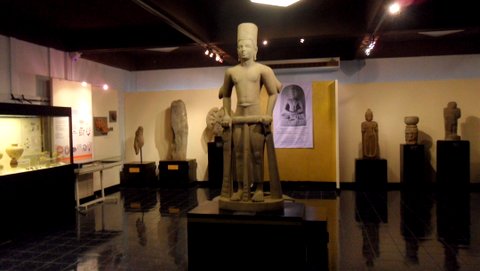
Displays on the ground floor Dvaravati is a distinct Buddhist culture developed between the 6th – 9th centuries in central and north-eastern Thailand with the major centre in Lopburi. This culture had a strong influence on temple architecture and religious art in Thailand and the region. 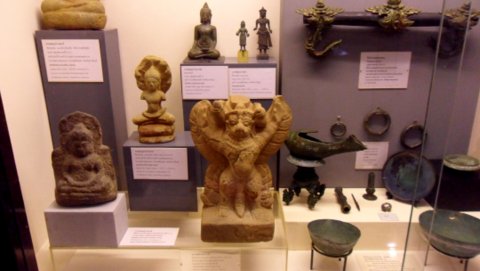
Assortment of relics The Khmer influence came later in the 11th – 13th centuries with the rise of the Angkor Empire based in Angkor. This empire covered parts of central and north-eastern Thailand. It left its mark in the numerous historical ruins and relics found in these regions. Here are some of these displays on the ground floor. 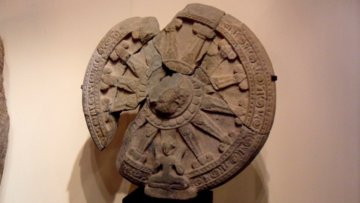
Dhammajak – the wheel of the law, Buddha’s first sermon to his five chief disciples. Dvaravati art 9th C Aranyaprathet, Sa Kaew 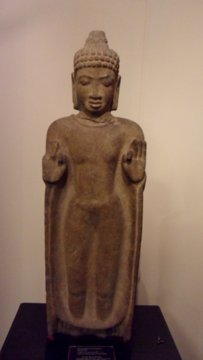
Buddha – Dvaravati art 7th – 9th C, Si Mahaphot, Prachinburi These lintels, characteristically Khmer, are ornate stone carvings placed over or by the sides of entrances to Khmer sanctuaries, many of which are in Thailand. Unfortunately some of these lintels that have been left in the open are damaged or missing. Such valuable artefacts are safer in a museum. 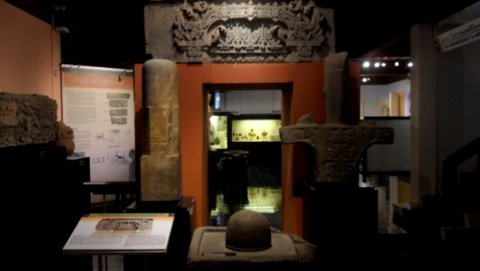
Lintels – Khmer art 7th C Prasart Khao Noi, Sa Kaew There are two types of lintels; functional and decorative. Functional lintels are placed at the upper door frames and embedded in the wall. They take the weight of the building and transfer the stress to the doorjambs (the vertical part of the door frame). Decorative lintels are merely works of art and are not weight bearing. Here are more of these elaborately carved lintels with flowery designs of images of Hindu deities. 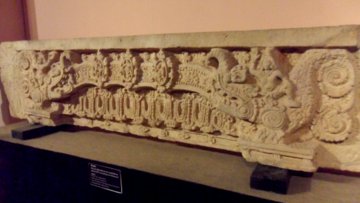
Khmer art 7th C Prasart Khao Noi, Sa Kaew 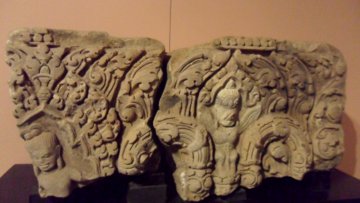
Khmer art 11th C Prasart Sdok Kok Thom, Ta Phraya, Sa Kaew 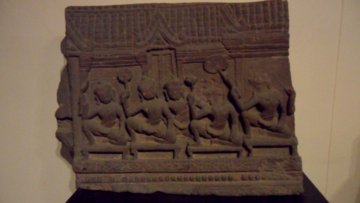
A fragment with a scene from Jadok*, Khmer art 11th C Wat Praniat, Chanthaburi *Jadok – a chapter of Buddhist scriptures that is part of a set of nine parts about the former births of Buddha 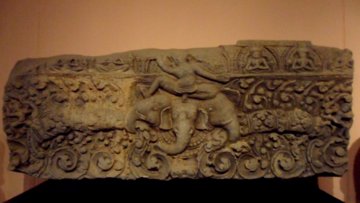
Indra astride Airavata#, the three-headed elephant, Khmer art 10th C, Prachinburi #Airawata – Erawan in Thai The last display area is on the Si Mahosot ancient city which I will be covering next month when I share with you details of my visit there. Table of contents Second floor – pre-historic relics, underwater archaeology and art in Thailand Pre-historic relics of eastern Thailand Pre-historic remains found at the Nong Nor Archaeological Site near the estuary of the Bang Pakong in Chonburi has evidence of life from 1,100 BC – 600 BC. That’s about 3,000 thousand years ago! From the human remains and tools that were found, conclusions were made on how the people lived and the period in which they lived. In the prehistoric period 10,000 years ago the people were hunters and lived in Chanthaburi, Chonburi and Rayong. From 4,000 – 3,000 years ago they turned to cultivation and rearing livestock in Chachoengsao, Chanthaburi and Sa Keaw. In the archaeological site at Khok Phanom Di in Phanat Nikhom Chonburi, the burial ground uncovered in 1985 had remains that date back to 2,000 – 1,500 BC! 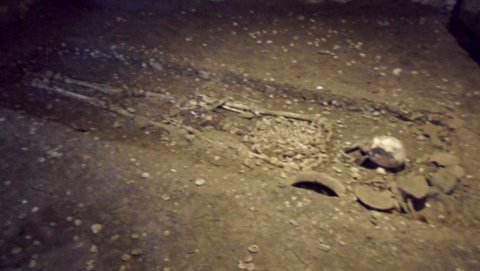
Human remains found in Khok Phanom Di, Chonburi The second stage of the Stone Age, the Mesolithic Age (about 5,000 BC), bones and animal horns were used as harpoons, arrows and fish hooks. 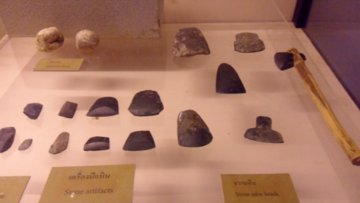
Stone axe and axe heads 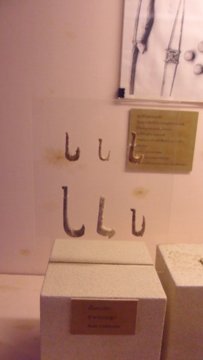
Bone fish hooks 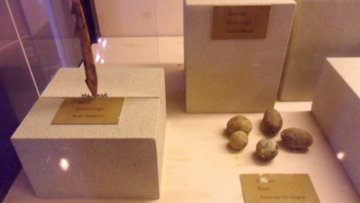
Bone harpoon (left) 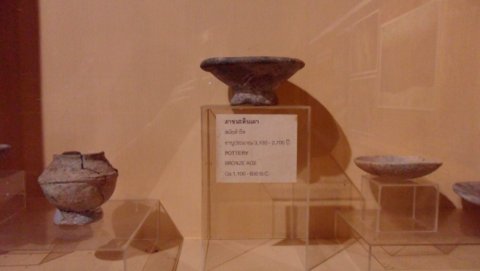
Bronze Age pottery 1,100 – 600 BC Underwater archaeology There is a section in the Prachinburi National Museum on underwater archaeology. This refers to the sunken ships in the Gulf of Thailand off the coasts of the eastern provinces. The ships were laden with the famous Sangkhalok ceramics from the Sukothai era in the 15th C and also Chinese and Vietnamese ceramics. 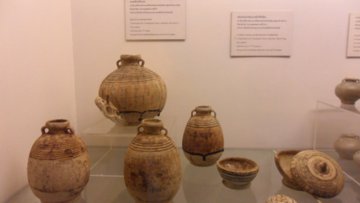
Pottery from the Si Satchanalai kiln, Sukhothai 15th C, recovered off Satthahip, Rayong 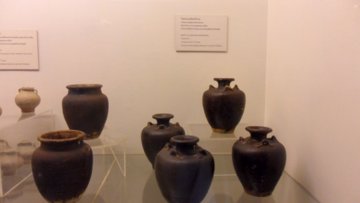
Vietnamese pottery 15th C, recovered off Satthahip, Rayong 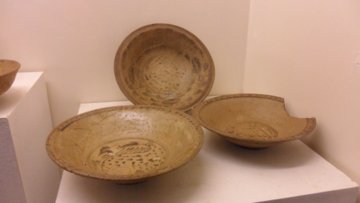
Sukhothai kiln 15th C, recovered off Satthahip, Rayong The subject of the Sangkhalok ceramics and the underwater artefacts is covered in Sawanvoraknayok National Museum and Ancient kilns of Si Satchanalai. Both places are in Sukhothai. Art in Thailand Lastly we visit the section on art in Thailand through the ages. 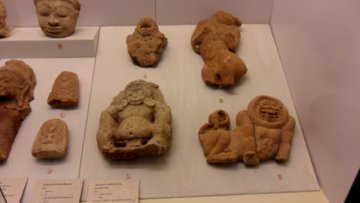
Dvaravati art 7th – 11th C 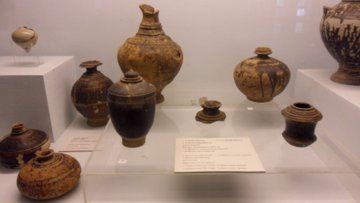
Khmer ware 11th – 13th C – Ta Phraya, Sa Kaew Makara a half terrestrial animal and half aquatic animal that is the steed of Ganga goddess of the Ganges River is a popular architectural decorations during the Sukhothai era. 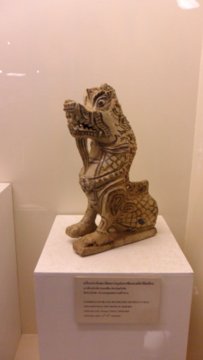
Distinctly Sukhothai 15th – 16th C 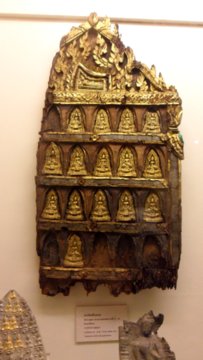
Votive tablet Ayutthaya 18th C Benjarong is the name for Thai ceramics that is originally white porcelain with coloured designs enamelled on it and then fired in a kiln. Originally designs were in five colours hence the name benja or five. Today designs come in more colours. 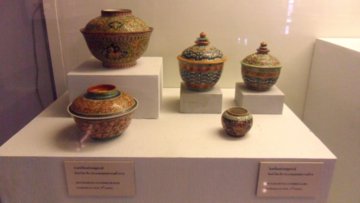
Benjarong ceramics – Rattanakosin 19th C That ends out tour of the Prachinburi National Museum. Our next stop is the ruins of Si Mahosot ancient city Table of contents Other national museums Here are some of the other national museums I’ve visited. Bangkok National Museum, Bangkok Khon Kaen National Museum, Khon Kaen Royal Barge National Museum, Bangkok Royal Elephant National Museum, Bangkok Sawanvoraknayok National Museum, Sukhothai Table of contents Map to Prachinburi National Museum View Prachinburi National Museum in a larger map Opening hours The Prachinburi National Museum is open on Wednesdays – Sundays from 0900 – 1600 hours. It’s closed on Mondays, Tuesdays and public holidays Admission fees Thai – 30 baht, foreigners 150 baht How to get to there By mini-bus Mini vans service from Victory Monument – Mor Chit northern bus terminal – Prachinburi city, fare 90 baht. Make sure you take the mini-van that goes into Prachinburi city, some of them only go as far as the Naresuan junction about 10 km north of the city. It’s a very slow journey, almost two hours, as the mini-vans stop very often to pick up or drop passengers along the way. There are no tour buses from Bangkok to Prachinburi, only inter-province buses. Table of contents Next month The ancient city of Si Mahosot - Prachinburi If you enjoyed reading this e-zine, please forward it to a friend. If you received this from a friend and found it interesting, please subscribe at Bangkok Travelbug. What you think of the Bangkok Travelbug? We love to hear from you What other subscribers have said Till next month then. Eric Lim Tour Bangkok Legacies Find us on Facebook Copyright@2008-2014 Tour Bangkok Legacies All rights reserved |
| Back to Back Issues Page |
